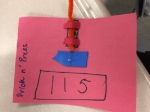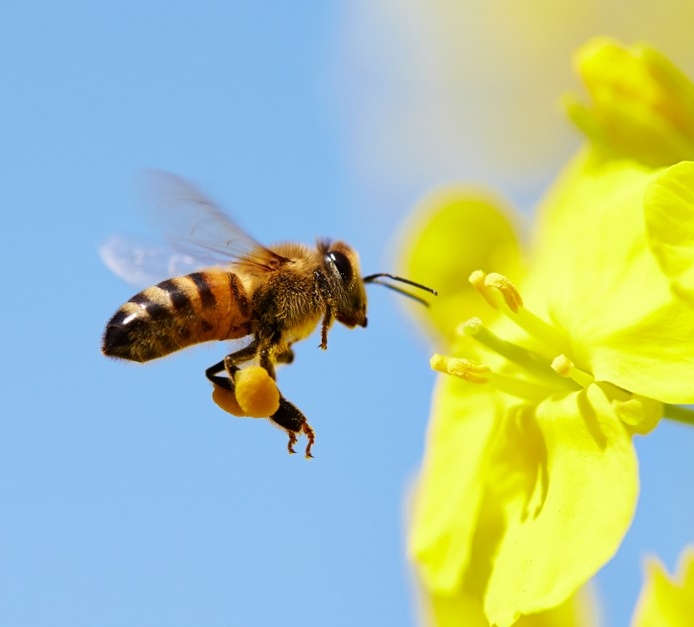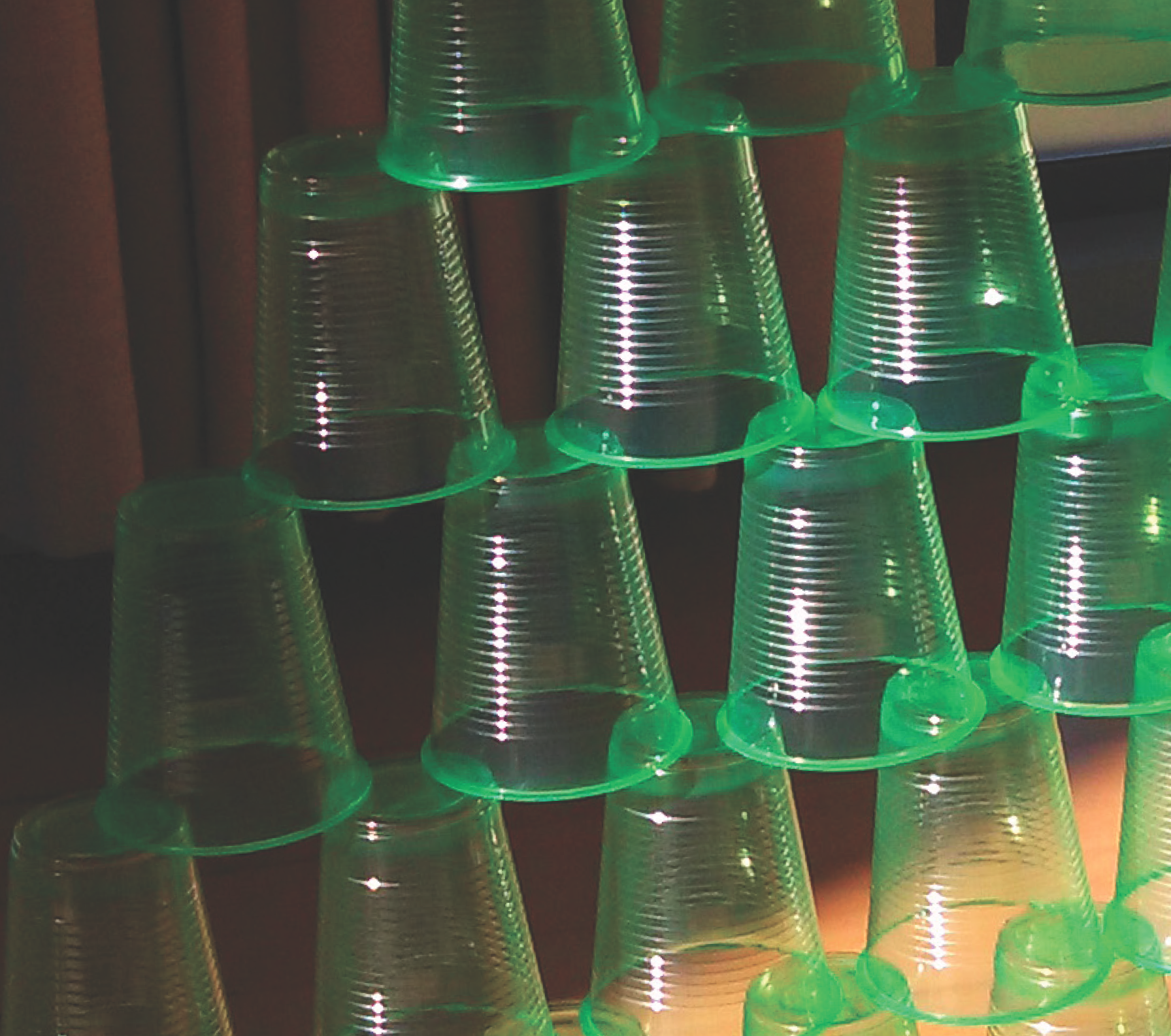Get creative and design #functionalfashion with free CAD programs
Leaf Chromatography
ESTIMATED COST:
$0.14
PER STUDENT
Required materials:
several leaves from different trees, small glass containers, rubbing alcohol, paper coffee filters, shallow aluminum pan, hot tap water, aluminum foil, scissors, tape, marker, sticky notes, plastic spoons
TED-Ed Description:
It's true that the cooler weather is a good indication that the seasons are changing, but there's no sign like the color of the leaves. In this lesson, you'll learn why leaves change color in the fall, and you'll learn how to do paper chromatography to separate the pigments found in a leaf.
NGSS alignment:
1. Asking questions (for science) and defining problems (for engineering) 3. Planning and carrying out investigations 6. Constructing explanations (for science) and designing solutions (for engineering) 7. Engaging in argument from evidence 8. Obtaining, evaluating, and communicating information
Tech in a Bag
Required materials:
household or classroom items, i.e. plastic snack bags, sticky notes, toothpaste, pair of scissors, markers, pencils, etc. within a paper lunch bag
Description:
Many students believe that technology only refers to things powered by electricity. In this lesson, each group of students gets a “mystery bag” containing an example of technology. When students open their bags, they may be surprised to see that they contain everyday objects like sponges, slippers, or bubblegum! (eie.org)
Tips:
Nothing necessarily needs to be bought for this lesson except possibly the paper bags. Many household or classroom items that you already have will work for this activity and can be reused multiple times. Items listed here have already been tested with students as a part of this lesson. My favorite items to use come from the kitchen: Cyclone by Quirky, a spork, gloves, recipe cards, etc.
1. Asking questions (for science) and defining problems (for engineering) 6. Constructing explanations (for science) and designing solutions (for engineering) 7. Engaging in argument from evidence 8. Obtaining, evaluating, and communicating information
Intro to STEM: 5 Activities to Launch the School Year
Complete one activity per day or sprinkle them in with your existing curriculum as needed. Each lesson below can be adapted for remote/distance learning.
Start the school year by anchoring everyone in the true definition of technology. In this activity, students learn that technology encompasses more than the things we power with electricity.
This activity is an excellent follow-up to Tech in a Bag. With this activity, lead your learners from the evolution of technology to its basic building blocks—algorithms.
Build on your learners’ knowledge of technology and algorithms by introducing them to the engineering design process next. Adaptive designs not only help those in need; adaptive designs help everyone and make life better for us all.
The dollar store is optional with this 1-2 day activity. Adapt this lesson with any items you and your learners can find around your homes. Take the engineering design process one step further, and compile the data your learners generate from testing designs. Stretch this activity into 2+ days by concluding with the following lesson…
Algorithms, technology, and the engineering design process come together in this lesson as incredible tools kids we can all use to get better and better at solving problems. Inspire learners how to find everything they need to become STEM experts at home with these two TED Talks:
Complete the activities, and post photos using #dollarstorestem. Got questions? Click Connect to drop us a line.
Adaptive Design Challenge
Suggested materials:
craft materials, i.e. masking (or scotch tape), string, chenille stems (pipe cleaners), markers, toothpicks, fastener strip (Velcro), construction paper
Description:
According to TryEngineering.org, engineers have developed products that help those with physical challenges lead more comfortable and independent lives. As shown in the videos below, adaptive designs not only help those in need, adaptive designs help everyone and make life better for all!
Tips:
Many craft, household or classroom items that you already have will work for this activity and can possibly be reused. Items listed here have already been tested with students as a part of this lesson. Students should be given access to as many or as few materials as you can afford. Allow students to be creative. I've done this activity with only toothpicks, markers and construction paper!
1. Asking questions (for science) and defining problems (for engineering) 2. Developing and using models 6. Constructing explanations (for science) and designing solutions (for engineering) 8. Obtaining, evaluating, and communicating information
Study Extreme Weather with a Dollar Store Barometer
ESTIMATED COST:
$0.07
PER STUDENT
Required materials:
jar or can, large balloon, rubber band, scissors, tape, stirring stick or straw, index card
Description:
A barometer is an instrument that measures air pressure, allowing weather forecasters and scientists to better predict extreme weather events. Actually, you don’t need to be a professional weather reporter to understand weather patterns. This easy to assemble barometer made from dollar store items can help!
Tips:
Craft, household or classroom items that you already have will work for this activity and can possibly be reused.
NGSS alignment:
2. Developing and using models 3. Planning and carrying out investigations 4. Analyzing and interpreting data 5. Using mathematics and computational thinking 6. Constructing explanations (for science) and designing solutions (for engineering) 8. Obtaining, evaluating, and communicating information
Paper Airplanes: Real-Life Algorithms
ESTIMATED COST:
$0.08
PER STUDENT
Required materials:
paper, scissors, glue
Code.org Description:
This lesson calls out ways we use algorithms in our daily lives, specifically making paper airplanes. This lesson also focuses on the bigger picture of computer science and how algorithms play an essential part.
NGSS alignment:
2. Developing and using models 4. Analyzing and interpreting data 5. Using mathematics and computational thinking 8. Obtaining, evaluating, and communicating information
Dollar Store STEM is back in action!
For the 2020-2021 school year, DSS is launching an A to Z lesson series.
Follow @dollarstorestem for updates: Instagram, Twitter.
Complete the activities, and post photos using the hashtag #dollarstorestem.
All the Buzz for Bees
ESTIMATED COST:
$0.13
PER STUDENT
Recommended materials:
game pieces, plastic cups, dice/die, dry erase board with marker (optional)
Description:
This lesson helps learners understand how genes and environment affect animal behavior of the almighty yet vanishing honeybee.
Tips:
Materials don't necessarily have to be purchased new for this activity. Household or classroom items that you already have can be used (i.e. math manipulatives for the game pieces or substitute the dry erase board with pen and paper).
NGSS alignment:
1. Asking questions (for science) and defining problems (for engineering) 2. Developing and using models 3. Planning and carrying out investigations 4. Analyzing and interpreting data 5. Using mathematics and computational thinking 6. Constructing explanations (for science) and designing solutions (for engineering) 7. Engaging in argument from evidence 8. Obtaining, evaluating, and communicating information
Conditionals with Cards
ESTIMATED COST:
$0.12
PER STUDENT
Required materials:
paper, markers, glue
Hour of Code Description:
We don’t always know ahead of time what things will be like when we run our computer programs. Different users have different needs, and sometimes you will want to do something based off of one user’s need that you don’t want to do with someone else. That is where conditionals come in. This lesson demonstrates how conditionals can be used to tailor a program to specific information.
NGSS alignment:
2. Developing and using models 4. Analyzing and interpreting data 5. Using mathematics and computational thinking 8. Obtaining, evaluating, and communicating information
Graph Paper Programming
ESTIMATED COST:
$0.08
PER STUDENT
Required materials:
paper, markers, glue
Code.org Description:
This lesson calls out ways we use algorithms in our daily lives, specifically making paper airplanes. This lesson also focuses on the bigger picture of computer science and how algorithms play an essential part.
NGSS alignment:
2. Developing and using models 4. Analyzing and interpreting data 5. Using mathematics and computational thinking 8. Obtaining, evaluating, and communicating information
Muscle Models
ESTIMATED COST:
$0.07
PER STUDENT
Required materials:
rubber bands, craft sticks, straws, metal brads, ruler, metal paper clip
Description:
Humans have 600+ muscles but only a set number of muscle fiber at birth. These fibers can increase in strength and size with exercise. In these lessons, students can learn the cellular mechanisms that lead to muscle growth as well as create and test models of muscle fiberss.
NGSS alignment:
1. Asking questions (for science) and defining problems (for engineering) 2. Developing and using models 3. Planning and carrying out investigations 4. Analyzing and interpreting data 5. Using mathematics and computational thinking 6. Constructing explanations (for science) and designing solutions (for engineering) 7. Engaging in argument from evidence 8. Obtaining, evaluating, and communicating information
Electrifying STEM: Circuits and Batteries
ESTIMATED COST:
$0.07
PER STUDENT
Required materials:
"switches," wire strippers, insulated wire, flashlight, lightbulbs, batteries, electrical tape
Description:
TED-Ed calls batteries a "triumph of science." They allow electronics to operate "without anchoring us to an infernal tangle of power cables." The activities above take learners from simple circuits to an electrifying design challenge.
Tips:
Scissors may be used instead of wire strippers, but may take extra practice to strip the wire. Select a flashlight that can be easily disassembled so that the lightbulb can be removed. Also, replacing flashlights with lightbulbs may be more cost effective.
NGSS alignment:
1. Asking questions (for science) and defining problems (for engineering) 2. Developing and using models 6. Constructing explanations (for science) and designing solutions (for engineering) 8. Obtaining, evaluating, and communicating information
Keep Calm and Just Breathe
ESTIMATED COST:
$0.12
PER STUDENT
Required materials:
plastic soft drink bottle, straw, rubber band, scissors, balloons, clay
Description:
Breathing ensures oxygen is transported to cells so they can function while removing carbon dioxide, a byproduct of this process. This lesson involves constructing a model lung to show how the complex process of breathing keeps us all alive.
Tips:
Materials don't necessarily have to be purchased new for this activity. Household or classroom items that you already have can be used and reused for this activity, saving you even more money!
NGSS alignment:
2. Developing and using models 6. Constructing explanations (for science) and designing solutions (for engineering) 8. Obtaining, evaluating, and communicating information
STEM in the Sun Lesson: Here Comes the Sun
ESTIMATED COST:
$0.15
PER STUDENT
Required materials:
used or new basic calculator, eyeglass repair kit or mini screwdriver, scotch tape
Description:
The Here Comes the Sun activity explores the concept of how solar energy is gathered by solar panels and adapted to provide power to a variety of machines, from calculators to spacecraft. Students disassemble a solar powered calculator to explore the component parts and work in teams to suggest design enhancements to the calculator to improve performance.
1. Asking questions (for science) and defining problems (for engineering) 2. Developing and using models 6. Constructing explanations (for science) and designing solutions (for engineering) 8. Obtaining, evaluating, and communicating information
Pixel Perfect Low-tech Comp Sci
ESTIMATED COST:
$0.08
PER STUDENT
Required materials:
markers and graph paper (or index cards and a ruler)
Description:
This low-tech offline lesson plan covers the basics of computer graphics. After learning about how graphics work, students will create their own Color by Pixel programs.
Tips:
If graph paper is difficult to find, create the grids on index cards with a ruler. For a high-tech extension of this lesson, click here.
NGSS alignment:
2. Developing and using models 3. Planning and carrying out investigations 4. Analyzing and interpreting data 5. Using mathematics and computational thinking 8. Obtaining, evaluating, and communicating information
Low-tech Comp Sci: Robot Friends
Required materials:
paper, markers, cups
Description:
This computer science lesson is a great low-tech introduction to coding. My Robotic Friends teaches students the connection between symbols and actions, as well as the valuable skill of debugging. Using a predefined “Robot Vocabulary,” students will figure out how to guide one another to accomplish specific tasks without discussing them first.
Tips:
The lesson plan has great adjustments for lower elementary, upper elementary and grades 7+.
NGSS alignment:
2. Developing and using models 4. Analyzing and interpreting data 5. Using mathematics and computational thinking 8. Obtaining, evaluating, and communicating information
Folding for Outer Space
Recommended materials:
aluminum foil, tape, small cardboard boxes
Description:
In this lesson, participants will explore how scientists and engineers incorporate folding and unfolding into many fascinating applications and technologies like telescopes and solar panels to study our galaxy and beyond.
Tips:
Many craft, household or classroom items that you already have will work for this activity and can possibly be reused. The recommended materials listed above have already been tested as a part of this lesson. Students should be given access to as many or as few materials as you can afford. Allow students to be creative. I've done this activity with only foil, tape and one small reused gift box! After finishing the activity, reuse the gift boxes to get the most "folds" for your money!
NGSS alignment:
1. Asking questions (for science) and defining problems (for engineering) 6. Constructing explanations (for science) and designing solutions (for engineering) 7. Engaging in argument from evidence 8. Obtaining, evaluating, and communicating informatio
BubbleSci
ESTIMATED COST:
$0.27
PER STUDENT
Recommended materials:
different types of soap (dish soap, hand soap, bubble bath, etc.), glycerin or corn syrup, items to make bubble wands (pipe cleaners, straws, etc.), measuring tools (cups, spoons, droppers, etc.), stopwatch (or smartphone app), distilled water, containers like cups or empty bubble solution bottles for students to test and keep their solutions.
Description:
Blowing bubbles may seem like a simple or childish pastime. However, blowing a bubble is packed with STEM concepts from physics to geometry to art (with that STEM becomes STEAM!). The lessons provided above allow teachers to take this activity in many directions to suit their instructional needs. For an engineering route, set up design challenges for the bubble wand and the solution. For a math route, study shapes, ratios or volume calculations. For a physics or chemistry route, experiment with air speed, solutions, surface tension and more.
Tips:
If glycerin is difficult to find, corn syrup can be used instead. Also, your local dollar store may carry small bubble containers with wands as party or wedding favors, which make great containers to store students' final solutions.
NGSS alignment:
1. Asking questions (for science) and defining problems (for engineering) 2. Developing and using models 3. Planning and carrying out investigations 4. Analyzing and interpreting data 5. Using mathematics and computational thinking 6. Constructing explanations (for science) and designing solutions (for engineering) 7. Engaging in argument from evidence 8. Obtaining, evaluating, and communicating information
Parts Per Million Activity
ESTIMATED COST:
$0.27
PER STUDENT
Required materials:
eyedropper, water, graduated cylinder (10 mL graduations), clear plastic cups, markers, food coloring
Description:
“Parts per million” is a scientific unit of measurement that counts the number of units of one substance per one million units of another. But because it’s hard to conceptualize really large numbers, it can be difficult to wrap our brains around what “one part per million” really means. Kim Preshoff (with help from 100+ animators from the TED-Ed Community) shares nine helpful ways to visualize it. Take this concept further with your choice (or both!) of the two lessons above.
Tips:
The Rutgers Engineering Planet lesson plan calls for masking tape, but the cup itself can be labeled with a permanent marker. For the Country Club Ichthycide Lab, egg platters can substitute the Chemplates. The more affordable option is to use cups, so it is up to the teacher's discretion whether to use cups or the platters/Chemplates. Also, the eyedropper can be substituted by an empty food coloring bottle.
NGSS alignment:
1. Asking questions (for science) and defining problems (for engineering) 4. Analyzing and interpreting data 5. Using mathematics and computational thinking 6. Constructing explanations (for science) and designing solutions (for engineering) 8. Obtaining, evaluating, and communicating information





















